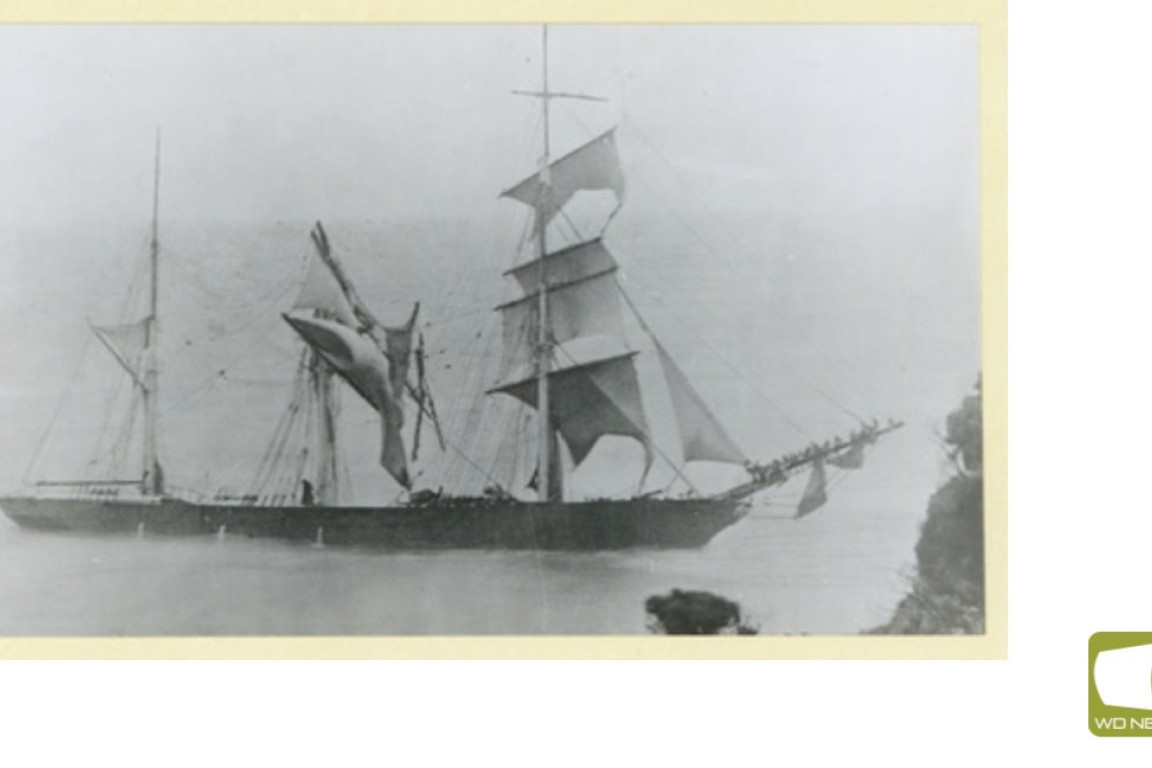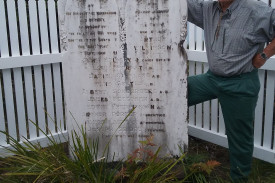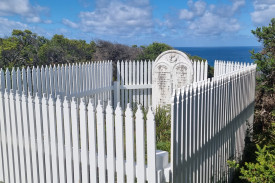General News
28 February, 2024
Fiji wreck site makes heritage register
THE site of the Fiji shipwreck - located near Wreck Beach, Gellibrand Lower - has been added to the Victorian Heritage Register.

More than 130 years after the ship was wrecked the landscape which includes the wreck site, beach, anchor monument, headstone and gravesite has been heritage listed.
The Fiji, with a crew of 24 was one day out from berthing in Melbourne after a 106-day voyage from Hamburg, when it hit a reef in the early hours of Sunday, September 6, 1891.
Attempts to launch the boats were unsuccessful and saw them dashed to pieces in the squally weather.
A young sailor, Julius Gerbauer, successfully made it to shore on a second attempt.
A part of land selectors from Port Campbell and Princetown came across the exhausted Gerbauer and raised the alarm.
There were 12 lives lost in the Fiji wreck event – 11 of the crew and one rescuer.
After the wreck of Loch Ard, the Department of Ports and Harbours made available rocket equipment and lifesaving apparatuses at Prot Campbell and Princetown.
‘Rockets’ were a device by which a linE could be shot out from the shore to a wrecked boat, and survivors hauled ashore.
According to information listed on the heritage listing, when news of the wreck of Fiji reached Port Campbell, rocket equipment was dispatched but arrived incomplete at Wreck Beach.
“Although a rocket managed to attach a light line to the ship, the heavy rope and bosuns chair required for people to make it to shore safely was not amongst the rocket equipment,” the account states.
“Ten men drowned as they attempted to make it to shore via the light line.
“A lifeboat had also set out from Warrnambool, but due to the distance and adverse conditions turned back.”
Historical accounts praise the bravery of local men, including a William Robe, who removed his boots and clothes and waded into the wavers to try to grab the struggling sailors who had plunged off the line from the ship into the surf.
“Some of the crew were washed away and drowned, but some owed their lives to the bravery of the local men,” the heritage register information states.
“In addition to Robe, those active in the rescue included M.J Dunne, Fenelon Mott, Peter Carmody, Edwin Vinge, Rev T.J Jones, a Mr Tregea, R. H. Henderson, Hugh Cameron, Arthur Robertson, Martin McMahon and Evans, together with a Constable Jones.”
A monument, high on the cliff above the wreck site, was erected adjacent to where the seven recovered bodies were buried four days after the disaster.
Four sailors were never found. All of the victims of the wreck are identified on the marble memorial.
The monument was positioned in March 1892, after district fundraising for the memorial to the lost lives, including local land selector Arthur Wilkinson whose brave attempt to swim to the vessel with a lifeline proved fatal.
The anchor for the monument was recovered from the Fiji wreck site and cemented upside down in the rocky reef at the base of the cliff.
It was erected in about 1970 by members of the Warrnambool Skindivers Club.
The anchor was reportedly found near the hull of the wreck and dragged 150-200 metres onto the shore.
In 2021, shipwreck historian Alan McLean launched a campaign to restore the monument and make access easier for people wanting to visit the site.
At the time he called on Parks Victoria to construct a 300-metre walking track off the Great Ocean Walk, to enable bushwalkers to pay their respects.
Mr McLean welcomed the decision to have the site heritage listed.
“Both the access track construction and the listing by Heritage Victoria are outstanding outcomes, both now and well into the future, for anyone interested in learning more about the Shipwreck Coast.
“I nominated the monument to be considered for heritage listing but the executive director of Heritage Victoria preferred and proposed that the monument, the beach anchor and the off-shore submerged hull should all be listed as capturing the essence of the story of what happened here in September, 1891.”
Mr McLean said the decision to have the site heritage listed would help preserve it.
“Back in 2021, the monument remained overgrown, lost to virtually all visitors, and very little known,” he said.
“The heritage listing obliges the authorities to preserve and protect the zone, for the benefit of all, and acknowledges the outstanding rescue work by men from Port Campbell and Princetown, in saving 14 lives.
“Up until 2021, Parks Victoria had been unconvincing in reasons for declining to create access, but ranger Andrew McKinnon should be commended for his quick realisation that a track could value-add to the visitor experience.
“In naming the pathway ‘Rescuers’ Track’, Parks Victoria has given recognition to local bravery, at a time when very few could swim.
“To wade out into the crashing waves to grab the struggling sailors in the twilight of September 6, 1891, is worthy of the highest commendation 135 years later.”
Access was restored to the monument in 2022.
Parks Victoria senior manager heritage services Paul Roser welcomed the site being listed on the heritage register.
“We’re delighted the Fiji monument will now be inscribed in the Victorian Heritage Register, recognising the dramatic story of the wreck and its aftermath’s place in Victoria’s maritime history,” he said.
“The inscription is testament to the hard work of Alan McLean and the Parks Victoria rangers, led by area chief ranger Andrew McKinnon, who cleared the site and restored access in 2022.”
Read More: local

